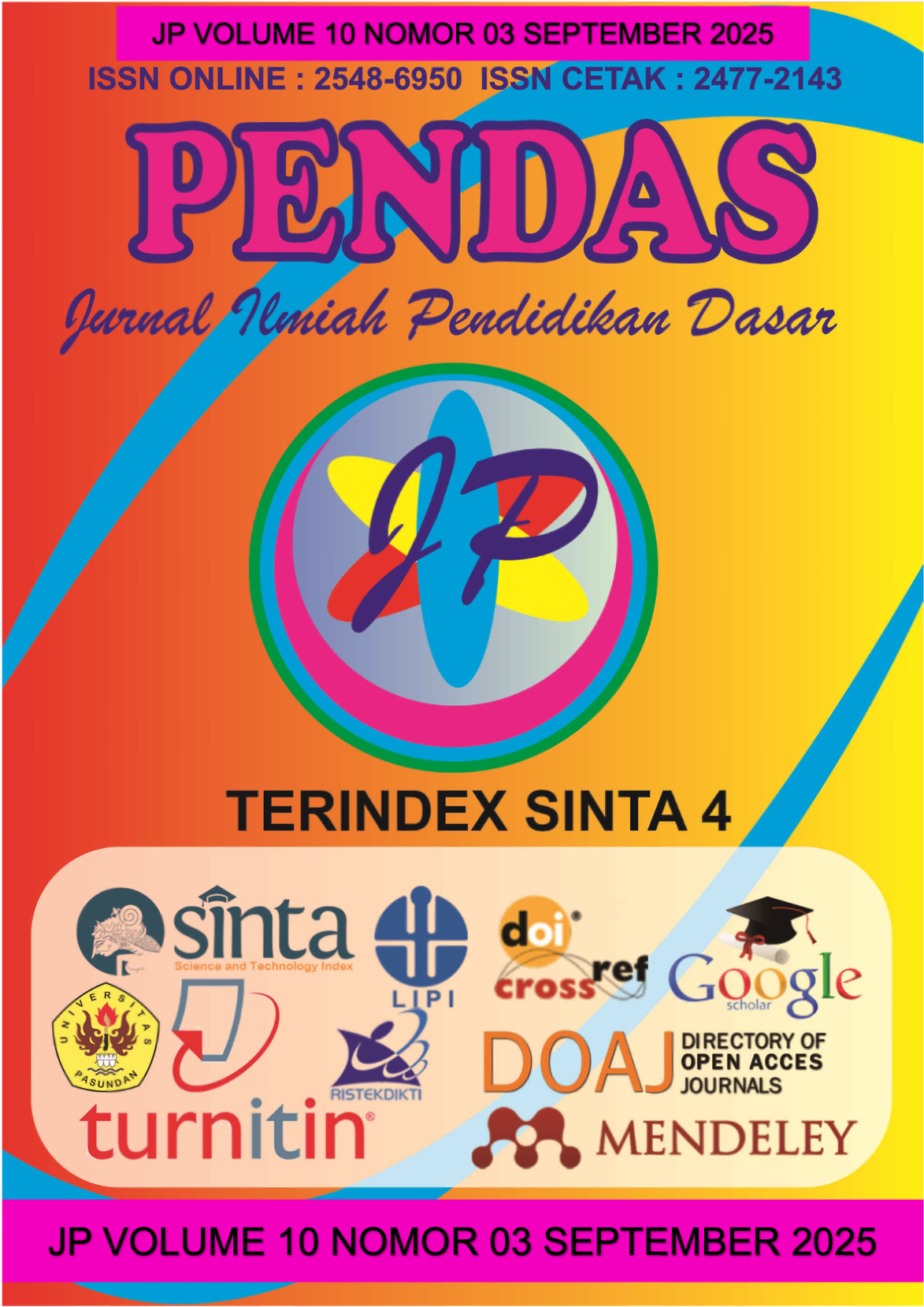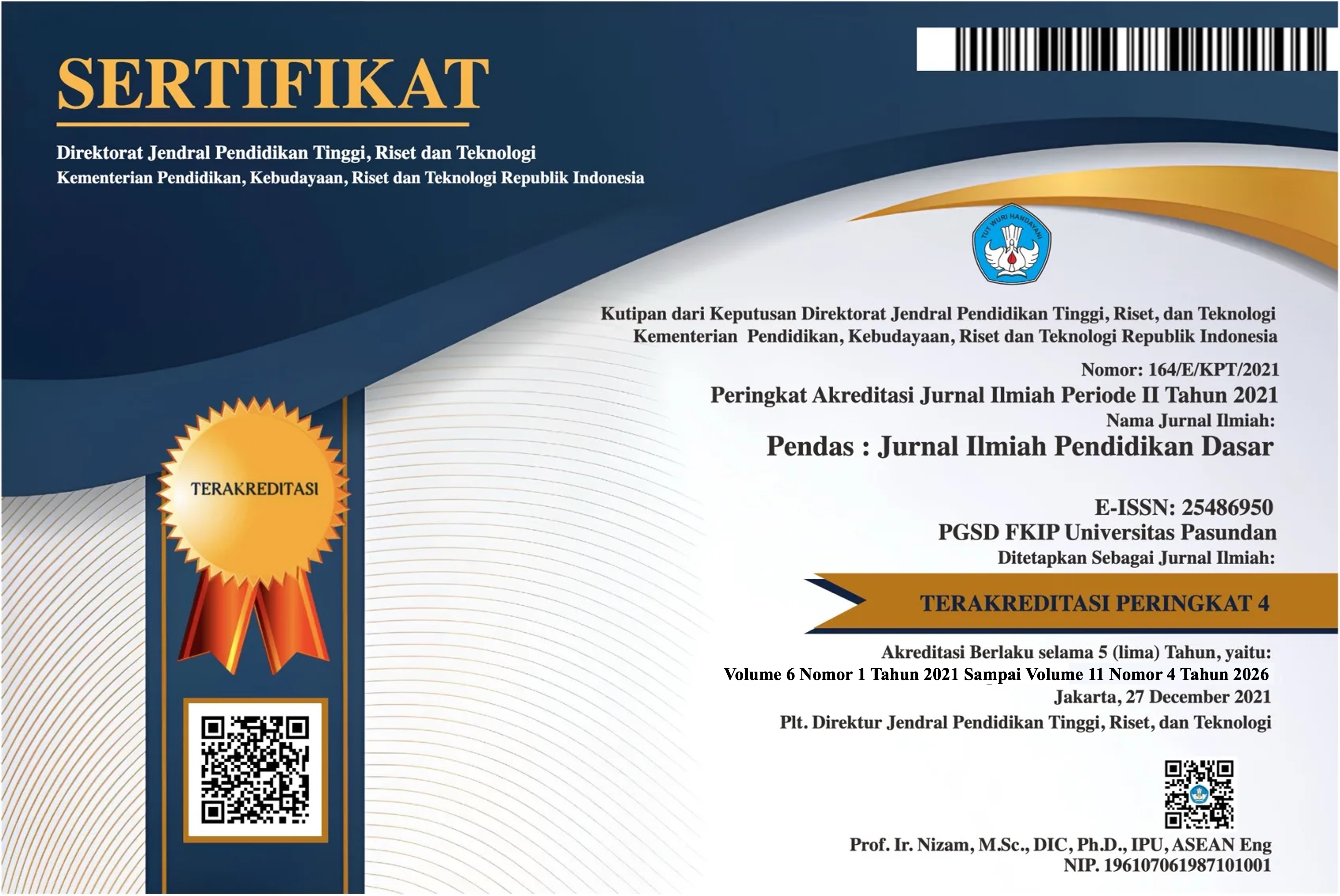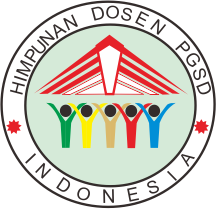PENGARUH PENGGUNAAN MEDIA PERMAINAN MONOPOLI TERHADAP KEMAMPUAN LITERASI BENCANA SISWA KELAS XI SMAN 1 PARIAMAN
DOI:
https://doi.org/10.23969/jp.v10i03.29474Keywords:
Monopoly game media, disaster literacy, disaster mitigation, geography learningAbstract
Indonesia is an archipelagic country with a high level of disaster vulnerability, especially in coastal areas such as Pariaman City, which is prone to tsunamis. Low disaster literacy among students in disaster-prone areas is a significant problem because it affects preparedness and risk management. This study aims to analyze the impact of using a monopoly game as a teaching tool on the disaster literacy skills of 11th-grade students at SMAN 1 Pariaman. The method used is quantitative with a quasi-experimental design. The sample consists of two classes: Class XI F6 as the experimental group (36 students) using the monopoly game as a teaching tool, and Class XI F8 as the control group (34 students) with conventional teaching methods. Data were collected through pretest and posttest assessments, observations, and documentation, then analyzed using validity and reliability tests, normality and homogeneity tests, independent t-tests, and N-Gain tests. The results showed a significant difference between the posttest averages of the experimental class (79.99) and the control class (61.4). The hypothesis test showed t-calculated 4.916 > t-table 1.668 with sig. (2-tailed) 0.001 < 0.05, meaning Ho was rejected and Ha accepted. The N-Gain test showed an increase in disaster literacy in the experimental class of 64.2% (sufficiently effective category). In conclusion, the use of monopoly game media has a significant and sufficiently effective impact on improving students' disaster literacy skills. The implications of this study are that monopoly game media can be used as an alternative strategy for disaster mitigation-based geography learning in disaster-prone areas to foster early preparedness.
Downloads
References
Adawiyah, R., Fitriani, R., Ramdani, Z., & Hardian, E. M. (2022). Pengaruh Permainan Monopoli Card Terhadap Kemampuan Motorik Kasar Anak Usia 5-6 Tahun. Jurnal Golden Age, 6(1), 313–322. http://e-journal.hamzanwadi.ac.id/index.php/jga/article/view/5775
Ajar, S. B., & Ronggowulan, L. (2022). Disaster literacy level of teachers and students in secondary school case study in Surakarta City, Indonesia. IOP Conference Series: Earth and Environmental Science, 986(1). https://doi.org/10.1088/1755-1315/986/1/012017
Amalia, M. (2020). Pengaruh Penggunaan Media Pembelajaran Monopoli Terhadap Motivasi Dan Hasil Belajar Siswa Pada Pembelajaran Ips Di Kelas V Min 29 Kabupaten Bireuen.
Azizah. (2018). Efektivitas Media Permainan Monopoli Materi Erupsi Gunung Berapi Terhadap Tingkat Pengentahuan Bencana Pada Ektrakurikuler Sekolah Siaga Bencana Di SMP Negeri 1 Delanggu Kabupaten Klaten. http://eprints.ums.ac.id/62561/2/NASKAH PUBLIKASI.pdf
BNPB. (2023). Indeks Resiko Bencaan.
Faqih Aziz, C. A. F., & Lakoro, R. (2023). Perancangan Board Game Sebagai Media Pengenalan Mitigasi Bencana Banjir. VISTRA: Jurnal Desain, Strategi Media Dan Komunikasi, 1(1), 42–55. https://doi.org/10.12962/j29880114.v1i1.692
Fauzi, A., & Arnia, R. R. (2022). Pengaruh Penggunaan Media Pembelajaran Monopoli Terhadap Kemampuan Penalaran Matematis Siswa Kelas V Pada Materi Bangun Ruang Di Mi Miftahul Huda. Al-Ihtirafiah: Jurnal Ilmiah Pendidikan Guru Madrasah Ibtidaiyah, 285–293.
Genc, F. Z., Yildiz, S., Kaya, E., & Bilgili, N. (2022). Corrigendum to “Disaster literacy levels of individuals aged 18–60 years and factors affecting these levels: A web-based cross-sectional study” [Int. J. Disaster Risk Reduc. 76 (2022) 102991] (International Journal of Disaster Risk Reduction (2022) 76, (S. International Journal of Disaster Risk Reduction, 80(August), 103244. https://doi.org/10.1016/j.ijdrr.2022.103244
Hale Manek, A. (2023). Literasi Bencana Dalam Pembelajaran Geografi Pada Kurikulum Merdeka Belajar. Jurnal Samudra Geografi, 6(2), 139–144. https://doi.org/10.33059/jsg.v6i2.7706
Ikhsanti, H. (2020). Analisis Tingkat Resiko Tsunami Di Kota Pariaman, Sumatera Barat.
Ikhsanti, H., Saraswati, R., & Sri Rahatiningtyas, N. (2020). Modelling Tsunami Level of Hazard in Pariaman Coastal Area, West Sumatera. E3S Web of Conferences, 202. https://doi.org/10.1051/e3sconf/202020213005
Inna Nur Khasanah, Desak Pulu Parmiti, I. G. W. S. (2018). Pengembangan Media Monopoli Dengan Model Hannafin Dan Peck Mata Pelajaran Ips Di Sd Mutiara Singaraja. Jurnal Edutech Undiksha, 6(2), 210.
Marliana, F. S. (2024). Pengaruh Media Permainan Monopoli Terhadap Kemampuan Literasi Mitigasi Bencana Siswa Kelas Vsdn Cengkareng Timur 14 Pagi.
Paradiba, E. (2024). Pengaruh Media Pembelajaran Monopoli Berbasis Kebudayaan Terhadap Minat Belajar Siswa Dalam Pembelajaran Ips Kelas Iv Sd Negeri 050750 Pangkalan Berandan.
Pradina, A. T., Pratama, M. M. A., Geografi, P., Sosial, F. I., Malang, U. N., Sipil, T., Teknik, F., & Malang, U. N. (2021). Peningkatan Literasi Mitigasi Bencana Gempa Bumi Melalui Booklet Ringkas Inovatif Bagi Siswa SDN Wonoayu Kecamatan Wajak Kabupaten Malang. JURNAL PASOPATI: Pengabdian Masyarakat Dan Inovasi Pengembangan Teknologi, 3(3), 168–176.
Prakoso, bondan, Widana, I. D. K. K., & Subiyanto, A. (2021). Pendidikan dan Literasi Bencana dalam kerangka tri sentra pendidikan untuk generasi tangguh bencana. Jurnal Manajemen Bencana (JMB), 7 (1).
Rakuasa, H., & Lasaiba, M. (2023). Pemetaan Kondisi Fisik wilayah sebagai upaya dalam mitigasi bencana tsunami di kecamatan Moa Lakor, Kabupaten Maluku Barat Daya, Provinsi Maluku. Geoforum, 2 (12), 13–21.
Sugiyono. (2020). Metodologi Penelitian Kuantitatif, Kualitatif Dan R&D (Sutopo (ed.); Cetakan Ke). Alfabeta.
Sung-Chin Chung, & Cherng-Jyh Yen. (2016). Disaster Prevention Literacy among School Administrators and Teachers: A Study on the Plan for Disaster Prevention and Campus Network Deployment and Experiment in Taiwan. Journal of Life Sciences, 10(4), 203–214. https://doi.org/10.17265/1934-7391/2016.04.006
Downloads
Published
Issue
Section
License
Copyright (c) 2025 Pendas : Jurnal Ilmiah Pendidikan Dasar

This work is licensed under a Creative Commons Attribution 4.0 International License.



















